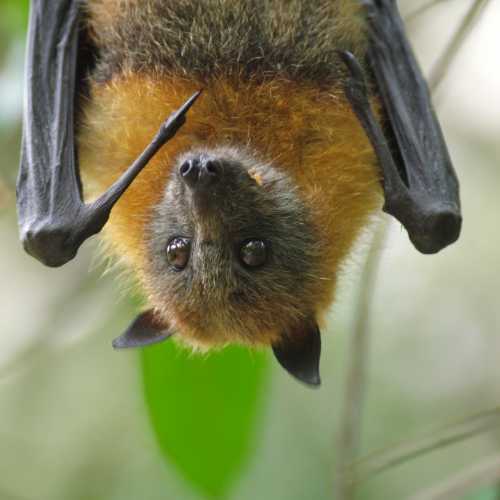Our forest is habitat for at least 17 different species of bat, from the tiny blossom bat as big as your thumb to the grey-headed flying fox who can grow up to 1kg in weight.
An iconic species in Australia, the flying fox is an integral gardener of the forest. Their movement and diet makes them incredibly important for the healthy regeneration of forests. They eat nectar, pollen and fruit and in doing so ensure pollination and seed dispersal.
Flying foxes have excellent nocturnal vision and unlike most other bats, it does not use sonar to locate food or navigate the dark.
The reproductive season begins in winter, with females giving birth to a single live offspring approximately six months later. Mothers carry their young on their backs until they are old enough to remain at the roost. Once capable of hanging independently, the young flying foxes begin to learn how to fly.
Flying fox are a ‘keystone’ species, meaning other animals and plants rely on them for survival. Their numbers are decreasing and the grey-headed species listed as vulnerable. This species is threatened by deforestation, accelerated climate change and other human pressures such as colony disturbance (including shooting), powerlines and barbed-wire fencing.
Closer to dusk you can witness the spectacular daily event when large colonies of flying foxes leaving their roost in search of food. They are truly a remarkable species.
